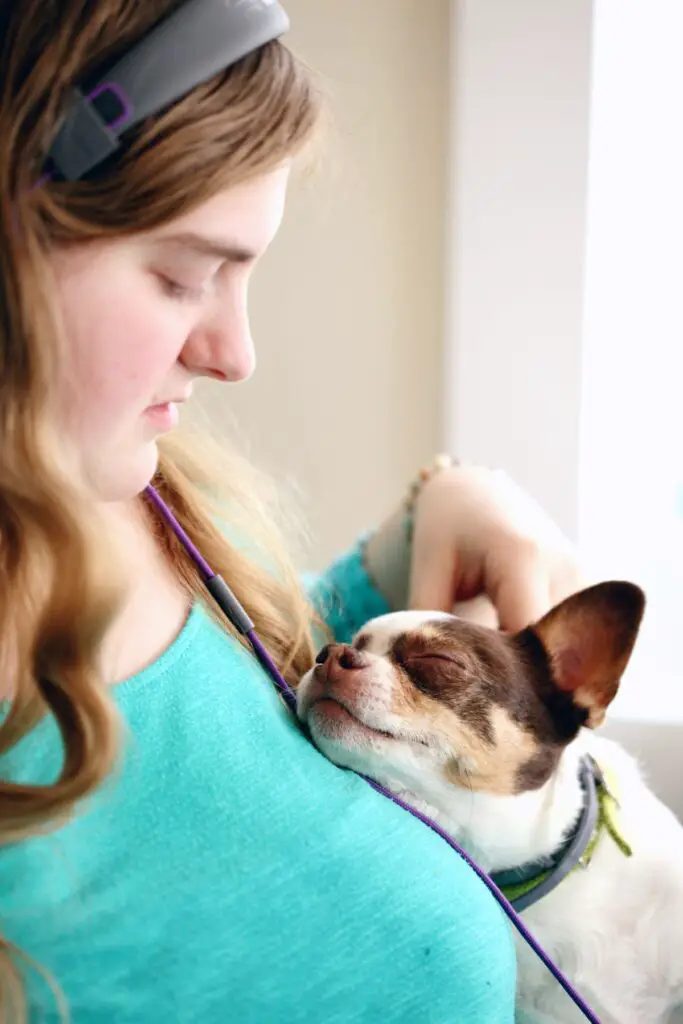8 Stress Busters: Conquer Autism and Stress With Proven Strategies
Autism is a complex neurological condition that can make some experiences that seem like no big deal for neurotypical individuals intensely overwhelming for many individuals. Sensory stimuli like loud noises, bright lights, certain textures, and crowded spaces often overstimulate the senses, causing distress and anxiety.
 Having stress busters (calming strategies) can help autistic individuals self-soothe when feeling overwhelmed by the world around them. This allows them to find a sense of calm and peace. I use many of these techniques regularly as I navigate my autistic world.
Having stress busters (calming strategies) can help autistic individuals self-soothe when feeling overwhelmed by the world around them. This allows them to find a sense of calm and peace. I use many of these techniques regularly as I navigate my autistic world.
Everyone needs to find a way to handle stress properly, regardless if you are neurodiverse or neurotypical, and these stress busters are proven ways to help you conquer autism and stress.
Many of these calming techniques have been suggested to me throughout the years, and I think these stress busters contain a lot of good tips. Hopefully, you can put them to good use, as I do!
8 Stress Busters For Finding Calm to the Chaos
- Deep Breathing Exercises
Taking slow, deep breaths when feeling anxious or overstimulated engages the parasympathetic nervous system, lowering heart rate and triggering relaxation.Deep breathing techniques provide an accessible way to self-soothe without any additional tools or devices.
To practice deep breathing, try inhaling slowly through the nose for a 5 count, holding the breath for 2 counts, and exhaling out the mouth for 5 counts. Repeat this cycle until a sense of calm returns.
Having an app with guided breathing animations or sounds can also help individuals focus on finding a smooth, even rhythm. Concentrating on the breath helps redirect attention inward to a quieter mental space.
Another deep breathing technique that is a sure-fire stress buster is belly breathing. Place one hand on the chest and the other on the abdomen. Inhale deeply through the nose, feeling the belly expand with breath. Exhale slowly out the mouth, focusing on the hand lowering with the abdominal exhale. This centers awareness on the sensation of breathing.
Visualizing calming imagery during deep breathing exercises can further aid relaxation as a stress buster that works anywhere, anytime.
Picture breathing in serenity and breathing out stress. Or imagine inhaling positive energy and exhaling tension. Let the visualization carry the mind to a peaceful place.
Finding activities such as yoga that work with deep breathing exercises are a bonus way to conquer autism and stress. It helps if you understand the relationship between autism traits in adults and physical fitness as well.
Learn more about these stress busters: walking in the morning (or whenever it works with your schedule), discipline, and nature therapy.
- Weighted Blankets
The gentle pressure of a weighted blanket can have a soothing effect on the body by releasing calming neurotransmitters like serotonin and dopamine.The deep pressure sensation helps relax the nervous system. Using a weighted blanket is like receiving a hug that envelopes the entire body with a warm, secure feeling.
Wrapping up in a weighted blanket when feeling anxious, overwhelmed, or overstimulated can be a great stress buster to lessen the intensity of those distressing sensations. The weight provides a comforting barrier that makes the outside world feel further away.
Different weights are available based on body size and individual preference. It may take some trial and error to find the right amount of pressure that feels best. Start with a 5-10% of body weight blanket and adjust from there.
Having a weighted blanket at home, work, school, or in transit can make soothing overwhelm more accessible. The item provides a portable source of calming wherever it’s carried. For maximum calm, try using a weighted blanket while practicing deep breathing or visualization.
- Fidget Toys
Having an engaging fidget toy on hand can help redirect nervous energy and keep restless hands occupied when anxiety builds. Fidget toys provide a positive outlet for fidgeting or stimming behaviors.The toys often have textures, buttons, switches, or other features that captivate touch.
Simple fidget toys include squishy stress balls, stretchy strings, infinity cubes, spinners, etc. They give anxious hands something to play with passively. The repetitive motion is self-soothing and satisfying.
Fidget tools with more involved components like handheld puzzle games or mechanical toys require concentration and active thinking. These more complex fidgets redirect mental energy in a calming way. The focus needed to maneuver the toy creates a mindful distraction from distressing thoughts or sensations.
Engaging the senses with the colors, textures, lights, and sounds of a fidget toy also curbs sensory seeking behaviors. Having a range of fidget options to suit different moods and environments helps prevent and tame overwhelm. Fidget toys can be excellent additions to sensory/calming kits.
- Noise-Canceling Headphones
Noise-canceling headphones provide literal peace and quiet by blocking out excessive external sounds that can cause sensory overload. For autistic individuals prone to auditory sensitivity, wearing noise-canceling headphones prevents loud ambient sounds from becoming overstimulating.
For autistic individuals prone to auditory sensitivity, wearing noise-canceling headphones prevents loud ambient sounds from becoming overstimulating.Turning them on mutes and dampens sounds like machinery, traffic, chatter, etc. This makes public spaces, work places, transit, and other noisy environments more tolerable.
Wearing the headphones with calming music or white noise playing through them further masks bothersome sounds while creating a soothing auditory environment. The headphones allow autistic individuals to focus on the peaceful sounds instead of the cacophony around them.
Having a personalized calming playlist queued up makes finding Zen easier when in a loud, hectic space. White noise apps with tone generators producing sounds like rain sticks, wind chimes or rain create a tranquil backdrop, too.
Having a pair of over-ear, padded, noise-canceling headphones or earbuds easily accessible makes shutting out auditory stimuli and avoiding sensory overload much simpler.
They provide an instant sense of relief and calm when things get too loud. For those prone to sound sensitivity, they are a must-have sensory aid as a stress buster.
Be careful about wearing them in situations where safety could be a factor. Don’t have loud music playing when walking in a busy street environment, or other situations where you could miss alerts like car horns, emergency vehicles, etc. In public, you shouldn’t tune out to the point where you could put yourself in harm’s way.
- Sunglasses
Wearing dark, high quality sunglasses can visually mute and dampen intense lights or visual stimuli to prevent visual overstimulation. For autistic individuals prone to visual sensitivity, the right pair of sunglasses prevents bright lights and excessive visual input from becoming overwhelming.Wearing sunglasses indoors removes glare from fluorescent lights, computer screens, and other artificial lighting that can overstimulate. The tinted lenses act like a dimmer switch, visually dulling sights.
Outdoors, the shades reduce glare from direct sunlight, helping autistic individuals moderate intense light. Lenses with UV protection also filter out ultraviolet rays which can cause eyestrain and headaches. Having sunglasses that block light from the periphery also minimizes excessive visual stimuli entering the field of vision from all directions.
Light-blocking wraparound styles and ones that fit over lenses work well for limiting peripheral light. Keeping a favored pair of sensory-friendly sunglasses on-hand makes visually overstimulating settings easier to handle.
They allow neurodiverse individuals to control their visual space and work great as stress busters for handling autism and stress.
- Timers
For autistic individuals who find transitions between tasks or activities challenging, setting a timer to prepare for upcoming changes can make shifts go much smoother. The timer serves as an alert that signals the end time of the current activity and start of the new one.This stress buster prevents jarring or sudden transitions that can feel disruptive or distressing. The countdown gives a defined amount of processing time to mentally prepare for what’s ahead.
Timers are especially useful during highly preferred activities to ease the transition away from the enjoyable event. Some autistic individuals get so immersed in a favorite task that they struggle to shift gears when the activity must end. Setting a timer clearly signals that change is coming, allowing time to wrap up and be ready for the new task.
Visual timers like hourglass sand timers or digital clocks provide concrete remaining time that’s easy to process. Apps with custom timer settings are handy, too. I use my timer on the clock feature on my iPhone and it works great for me!
Having control in setting the timer duration helps autistic individuals feel more in control of transitions. Allow ample lead time plus extra processing time after the timer goes off before making the switch.
Starting with a generous window and slowly decreasing the countdown transition time helps develop flexibility. Patience and praise during transitions calm frustration.
Timers foster independence in self-regulating transitions and change and is a great stress buster and calming strategy.
- Quiet Spaces
Having access to a safe, quiet space to retreat to when feeling overwhelmed is essential for autistic individuals to mentally reset. Creating a dedicated sensory room, cozy corner, or peaceful spot minimizes stimulation and offers a refuge from sensory and social demands.Quiet spaces should provide a sense of serenity with calming lighting, soft textures, comfortable seating and privacy. Removing visual clutter also promotes a simpler, soothing environment and is a great calming strategy.
Necessary features include blocking excessive sounds, muting bright lights, and limiting visual distractions. Noise canceling headphones, sunglasses, weighted blankets, fidget tools, deep breathing prompts and favorite interests can stock the space.
Visitors and social interactions should be limited to respect the solitude required to find calm in the quiet zone. Offering autonomy in taking self-initiated breaks prevents build up to sensory overload. Voluntary quiet time empowers independent regulation.
For public spaces like schools or offices, having a private quiet room to decompress in is ideal. If that is not possible, designate a corner with partitions or curtains for temporary sensory relief.
Having an escape plan to access an immediate calming spot reduces anxiety when overwhelmed away from home. Planning ahead for access to serene places ensures overstimulation has an off switch within reach. Quiet spaces allow the senses to settle and provide refuge and serve as powerful stress busters.
I’m a huge advocate of quiet spaces, and peace and quiet is something that I require every day as a stress buster and as a way to calm the chaos in life. On nice days, I will sit on the patio in the sun.
Or, I am fortunate enough to have a place upstairs away from the noise of every day life where I can retreat and chill for a while. It really works great for me, and I re-enter the world with a renewed sense of calmness after “regrouping” for a bit.
- Consider Emotional Support Animals
 While a pet or emotional support animal isn’t for everyone, they can be a proven stress buster for someone who loves animals and is seeking calming strategies to balance their life.
While a pet or emotional support animal isn’t for everyone, they can be a proven stress buster for someone who loves animals and is seeking calming strategies to balance their life.Depending on the individual, there are positive reasons that emotional support animals can be life changing. Among those, are that a trained ESA can help ease anxiety, loneliness, social isolation, and depression.
Having a pet or an ESA (and remember, dogs are just one of many types of animals that can provide soothing and calming influences) can also force positive habits.
Animals need to be fed, walked, loved, and groomed. That requires the pet owner to establish routines that may require a timer, walking, and other practices that help with stress.
While I don’t have an ESA, our family has pets, and I have to agree that a nice warm body and wagging tail brings a certain calmness to my life. However, our dogs’ need to bark at about everything can quickly cause stress to return at times.
Learn more about the pros and cons of being on the spectrum and having an Emotional Support Animal or a pet.
Stress Busters: Utilizing Powerful Calming Tools and Strategies
The right calming strategies and tools make a major difference in an autistic individual’s ability to self-regulate when feeling overwhelmed or overstimulated. Experiment with different techniques and sensory aids to build a personalized toolbox to regain calm and cope with distress.
Listen closely to your body, mind, and senses. Observe what helps make challenging moments more tolerable and use those strategies proactively to prevent reaching meltdown.
Don’t be afraid to stim openly or make environmental adaptations like wearing noise cancelling headphones or sunglasses, even if it draws attention. Autistic individuals deserve to access the sensory regulation aids that allow them to function comfortably in the world.
With the right calming toolkit, overwhelming experiences can become centered, grounded ones.
Find what works best and use it shamelessly. Inner peace and self-control come from self-compassion, not comparison. Prioritize feeling safe, secure, and soothed. The rest will follow.
Additional Misconceptions That Lead To Autism Stigmas and Stereotypes
Learn more about other stigmas and stereotypes that autistics face:
- Why Labeling People Can Lead to Stereotyping and Discrimination
- Autism Media Stereotypes: We’re Not All Geniuses, Savants, or Lonely
- Beyond Stereotypes: How Rain Man Revolutionized the Perception of Autism
- Absurd Plot About Autism and Evolution and Why It’s Harmful
- Moving Past the Tired Conspiracy Theory of Vaccines and Autism
- 3 Reasons Why Pathologizing Crushes Autism Acceptance and Inclusion
- The Hidden Hurdles: Challenging Autism Stigmas in Today’s Politics
- History of Autism: Revealing Shocking Mysteries from the Past
- Knocking Down the Stigma to Autism Obsession